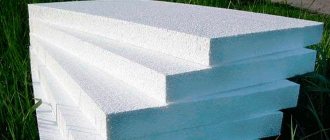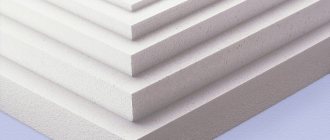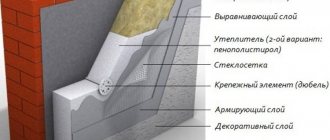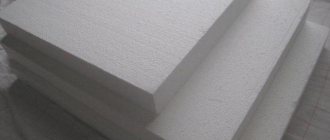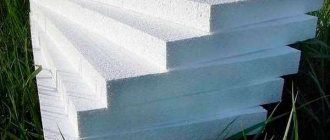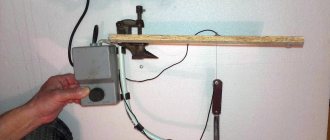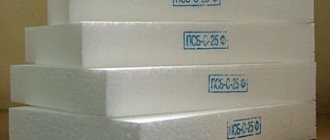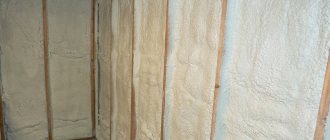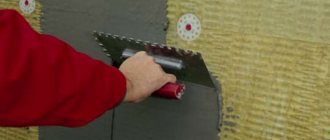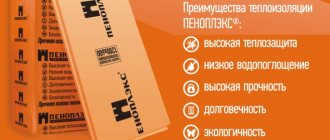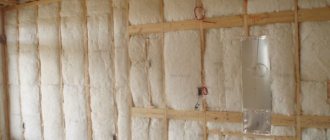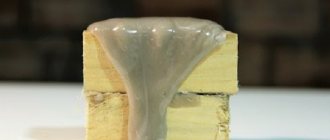Requirements for candidates
Before gluing foam plastic to the wall, choose an adhesive composition that is optimally suited to the wall material and the insulation itself.
The use of expanded polystyrene foam imposes certain restrictions on the substances included in the composition of the glue used. When purchasing it, you need to carefully study the ingredients and if it contains:
- ethers (methyl acetate, butyl acetate);
- alcohols;
- natural gas derivatives (propane, hexane and others);
- amines (aniline, etc.);
- hydrocarbon processing products (gasoline, kerosene, white spirit, etc.)
- ketones (acetone, etc.);
- compounds containing chlorine (dichloroethane, chloroform);
- nitrogen compounds (nitrobenzene, nitromethane);
then you don’t need to buy such glue. The compounds included in it have a destructive effect on the structure of expanded polystyrene either immediately or over time.
Advantages and disadvantages of the material
The popularity of the material and its wide range of applications are due to its unique properties and advantages. These include:
- Eco-friendly and natural material. It does not release harmful and toxic substances into the environment, therefore it is completely harmless to the human body.
- Durability. Expanded polystyrene is not afraid of fungus, mold and microorganisms.
- Excellent withstands temperature changes and resists flames.
- Small mass. Thanks to this, the material is very easy to install and does not load the base.
- Affordable price. The material can be purchased at any construction supply store at a low cost.
But even here there are some drawbacks . Expanded polystyrene has the following disadvantages:
- easily breaks and gets damaged;
- has low resistance to solvents and nitro enamels;
- does not allow air to pass through its structure;
- Polystyrene foam often suffers from rodents.
What is foam plastic
The second name for polystyrene foam is expanded polystyrene. This is a soft material that consists of a plastic air mass. Its structure is cellular and white. The cells are reliably separated from each other, so the material has good thermal insulation properties.
Foam Features:
- Good thermal insulation. This material retains heat very well and is therefore used as wall insulation.
- Low level of toxicity. Thanks to this, polyurethane is safe and is used in various fields.
- Small mass.
- Moisture resistance. It resists moisture well, absorbs only 4% of the total moisture.
- Resistant to parasites and mold.
- Simple processing. Due to the fact that it has a soft composition, it is easily cut with a saw and hot wire.
Kinds:
- Polystyrene. It consists of white granules, which are obtained by heat treatment of polystyrene. A gasifier is used during this treatment. The size of the granules ranges from 7 to 17 mm. The structure of the granules consists of closed cells that are 98% filled with gas.
- Polyurethane. This material is obtained by combining diisocyanates and polyesters. These substances are connected using pressure. The structure is not the same - the cells have different shapes and sizes. The cells are very closely adjacent to each other and due to this the density of the material is very high. This type of foam has high strength and durability.
- Polyethylene. This material is flexible and elastic. Polyethylene has a small thickness - only 5 cm. This type of foam is used for packaging products.
And here you are, my old lady
Polyurethane foam can be used to glue polystyrene foam to concrete, brick, and stone. To do this, just apply it around the perimeter and cross through the center. Place the slab in the installation location. After installing several rows, fill the gaps between the slabs with foam.
Advantages of using polyurethane foam:
- reliable fastening of slabs to stone building materials;
- ease of application.
There are still many more disadvantages:
- increased degree of expansion after application (due to uneven expansion, voids and surface unevenness may form);
- high foam consumption per meter of area;
- the need for long-term fixation of the slab due to prolonged setting;
- the structure of the thermal insulator may be destroyed under the influence of foam components.
If you can reduce consumption by using a spray foam gun, then nothing can be done about other shortcomings. Therefore, all that remains is to accept it or choose a different adhesive composition with which the polystyrene foam will be glued.
Application area
Polystyrene foam is used in various spheres of life. A large number of materials and products are made from it. The material also retains heat well, so it is often used to insulate walls.
Areas of application of expanded polystyrene:
- Construction works. In construction, it is used for thermal insulation of structures, houses, buildings, garages, hangars. It is also used for external insulation.
- In shipbuilding. Lifebelts, lifeboats, and light boats are made from it. Also used to fill the compartments of small boats.
- In medicine. In this area, foam containers are used to transport organs and medicines.
- In furniture production. It is added to the composition of the material from which various pieces of furniture are then made.
- For the production of packaging materials. Added to various bags, packaging, wrappers, and so on.
- For the production of outdoor advertising. It is added to advertising structures - banners, signs.
- In clothing production. It is added to many fabrics. Clothes containing foam are very warm.
Criteria for choosing an adhesive composition
Due to the fact that this is a very popular material, many people want to know what glue to use to glue foam. PVA glue is suitable for gluing ordinary crafts . This composition can be used to fix the material on cardboard, wood or sheets of drawing paper.
It is noteworthy that today there are special adhesive mixtures for expanded polystyrene on sale. Such a composition, as a rule, is inexpensive, but it is much more difficult to find than ordinary PVA. When purchasing, you should pay attention to the information on the label. There are types of mixtures that are intended for gluing foam to foam, and there are compositions suitable for bonding foam to other surfaces.
It is much more convenient and faster to fasten polystyrene foam with a composition in the form of an aerosol. In addition, such compositions can be used to glue it to paper, plastic, metal, wood and cardboard.
Thinking about how to glue the foam. no need to use an adhesive mixture that contains a plastic solvent. In essence, polystyrene foam is plastic mixed with air, which is why it is lightweight. Using such glue may corrode the material, ruining the product.
Features of applying adhesive mass
To work, you need to know the features of polystyrene foam and how to glue it to other surfaces. You also need to adhere to a clear sequence. So, application consists of the following steps:
- Surface preparation and cleaning . Working with foam is very easy if you choose the right glue. All that is necessary for this is to apply the composition to the foam element and press it to the required plane. Then you need to wait until the glue dries. But before gluing, you need to remove particles of dirt and dust from the surface using a dry cloth. Gluing to a contaminated base will negatively affect the adhesive ability, which will significantly weaken the fixation.
- Applying the adhesive mixture. For maximum effective fixation, an even and thin layer should be applied to the surface. If there is no need for strong fixation, then the glue can be applied in strips or drops. If you have a very large foam part, you can pour glue directly into the groove or treat the surface with a brush.
- Installation of material . It must be pressed carefully but firmly so that the composition can come into contact with the surface being treated. This will give you about one to two minutes to adjust the position of the foam.
- Drying. After that, you just have to wait for the glue to dry. Depending on the dimensions of the surface, the type of adhesive solution and its volume, complete drying time varies from five to ten minutes to three to five hours. During this period, you should not touch the surface, otherwise the procedure will have to be repeated.
Expanded polystyrene is very easy to glue, and almost any adhesive is suitable for this job. In addition, it is extremely lightweight and does not cause any problems during installation and operation.
